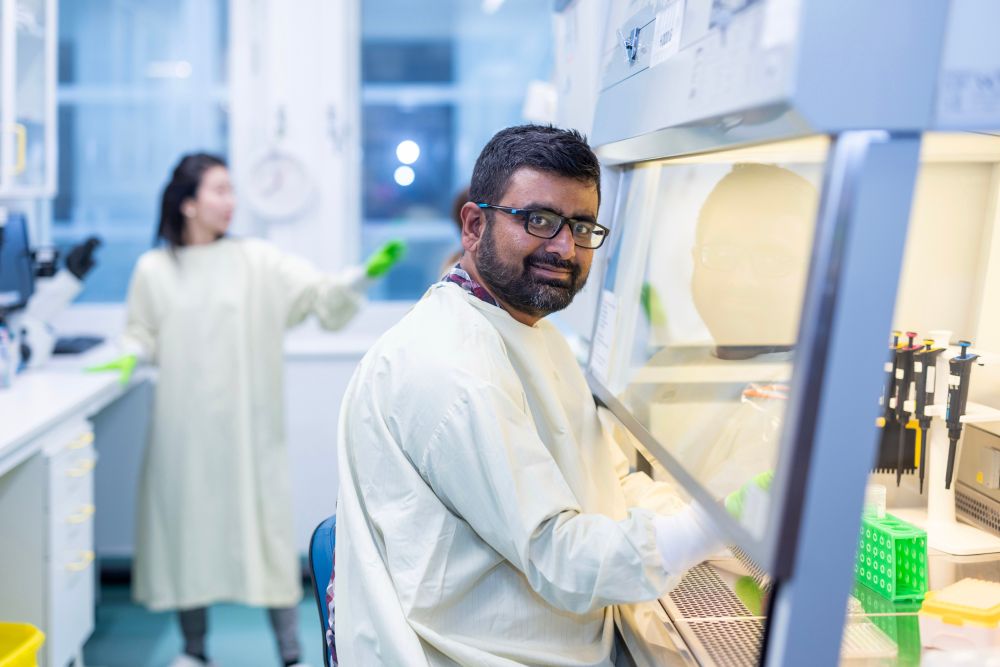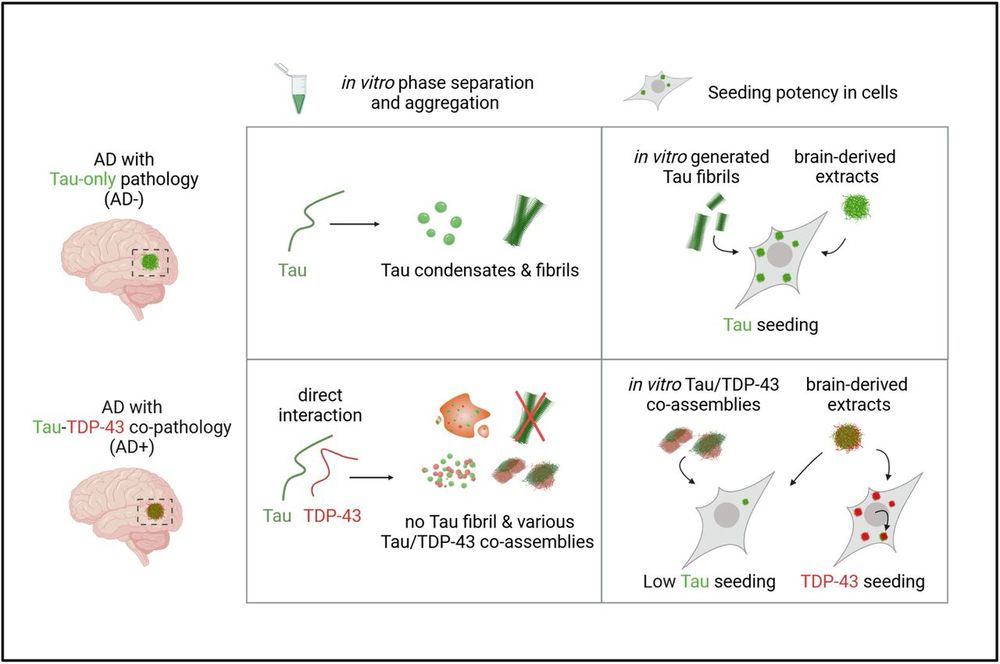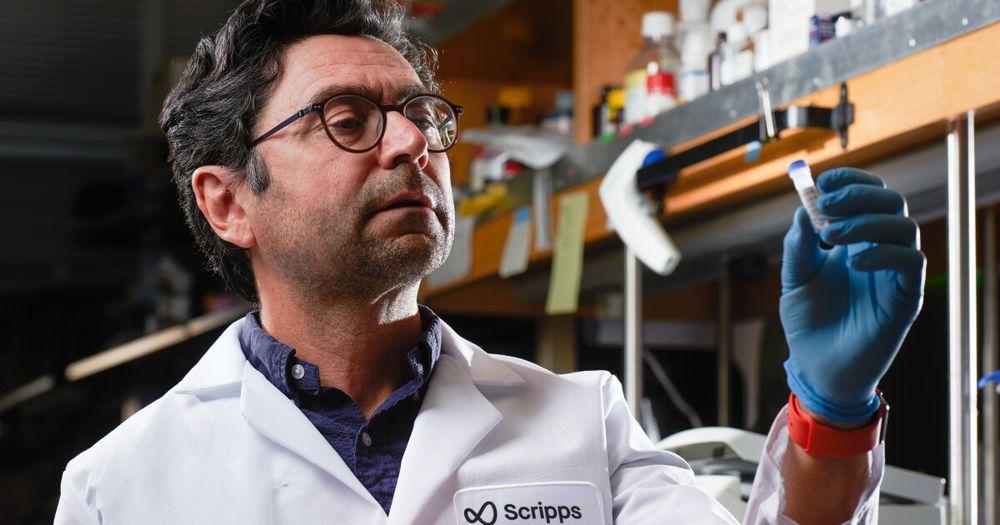
🚨🚨The GRC on Intrinsically Disordered Proteins #IDPs is back!! 🍝🧵🏔️Join us for cutting-edge IDP science, great discussions, and mountain views 🌄🍝
📅 June 21-26, 2026 | Les Diablerets, Switzerland
👉 Details & registration: grc.org/intrinsicall...
@tanjamittag.bsky.social
Phase separation and disordered proteins!

🚨🚨The GRC on Intrinsically Disordered Proteins #IDPs is back!! 🍝🧵🏔️Join us for cutting-edge IDP science, great discussions, and mountain views 🌄🍝
📅 June 21-26, 2026 | Les Diablerets, Switzerland
👉 Details & registration: grc.org/intrinsicall...
It’s actually all your own doing, Alex. Very well deserved.
02.10.2025 19:36 — 👍 1 🔁 0 💬 0 📌 0
Why are transcription factors disordered? Come join us in Oxford as a postdoc and we'll find out together!
Help publish 3 mature projects, AND develop cool new single molecule fluorescence binding assays!
biophysics
transcription
protein:DNA interactions
my.corehr.com/pls/uoxrecru...

Come work with me. Excellent startup package. su.varbi.com/en/what:job/...
30.09.2025 07:43 — 👍 4 🔁 4 💬 0 📌 0Congratulations, Alex!!
30.09.2025 05:42 — 👍 2 🔁 0 💬 1 📌 0We are hiring an Assistant Professor of Biochemistry and Biophysics at Weill Cornell Medicine. Come join our collaborative research environment with state-of-the-art facilities in NYC! Application review starts Oct 22.
biochem.weill.cornell.edu/join-our-fac...
We are looking for a new colleague to join the vibrant and fast-growing biophysics community at CMU and in Pittsburgh! The City of Bridges also offers a unique combination of affordability, innovative ecosystems, and rich cultures. Please spread the word!
29.09.2025 21:10 — 👍 4 🔁 3 💬 0 📌 0
Feeling awed and a bit starstruck that @science.org chose to run a book review on #LabworkToLeadership!!
www.science.org/doi/10.1126/...
Did you know about the BPS Bridging Funds Program?
If you're a biophysicist navigating a difficult time, this program is for you to defray costs for attending the BPS Annual Meeting!
I am grateful to the @biophysicalsoc.bsky.social for supporting our members!
www.biophysics.org/2026meeting/...

Wow
Karolinska Institutet is recruiting 20 outstanding early-career researchers for assistant professor positions
ki.se/en/about-ki/...

Direct binding of TDP-43 and Tau drives their co-condensation, but suppresses Tau fibril formation and seeding www.biorxiv.org/content/10.1...
20.07.2025 21:01 — 👍 6 🔁 4 💬 0 📌 0Lastly, we provide a transferable framework to critically evaluate the functional roles of other phase separating systems.
09.07.2025 04:28 — 👍 0 🔁 0 💬 0 📌 0We interpret our data to mean that Gcn4 sequence variants can function as soluble complexes as well as heterotypic condensates but that condensates formed by variants with high affinities can dampen activities. Our study therefore reconciles
opposing views in the literature.
We find that abilities of Gcn4 variants to co-phase separate and form complexes with Med15 are highly intertwined. Separating the transcriptional functions emerging from condensate or soluble complex formation is therefore not straightforward, and extant literature should be interpreted cautiously.
09.07.2025 04:26 — 👍 0 🔁 0 💬 1 📌 0Homotypic phase separation of Gcn4 variants does not
predict in vivo activities well. DNA binding solubilizes Gcn4 condensates, which is reversed by Med15 association. Thus, binding to Mediator may facilitate the formation of Gcn4 condensates even on repetitive regulatory DNA sites in the genome.

Given that transcriptional condensates in yeast are expected to
be miniscule and therefore challenging to visualize, and given that even the presence of condensates would not mean that they are the functional entities, we chose a mutagenesis-based approach.
Phase separation regulates many biological processes, but the role of TF-mediated condensates in gene regulation is contentious. We used Gcn4, a prototypical budding yeast TF, to assess two competing models for transcription activation, i.e., mediated via soluble complexes or through condensates.
09.07.2025 04:16 — 👍 2 🔁 0 💬 1 📌 0New paper on transcription factor phase separation published from my colleague Aseem Ansari's and my lab: Reconciling competing models on the roles of condensates and soluble complexes in transcription factor function authors.elsevier.com/sd/article/S...
09.07.2025 04:12 — 👍 28 🔁 12 💬 1 📌 0
Karolinska is looking for 20 (!!) assistant professors and offering 6 year appointments with ~1M USD startup packages.
ki.se/en/about-ki/...
It’s been a weird, unproductive week at the lab and I’m feeling a little down. So here are 10 cool facts about vision:
21.06.2025 04:09 — 👍 60 🔁 23 💬 2 📌 3Interestingly, we find that not all loss-of-function mutations result from direct inactivation of the substrate-binding groove. Some instead stabilize the double-donut state! In conclusion, we report a massive ubiquitin ligase assembly state that functions to sterically fine-tune its activity.
21.06.2025 04:02 — 👍 1 🔁 0 💬 0 📌 0We show that mutations that stabilize the double donut state can be combined with mutations that promote the filament state. This gives rise to intermediate activities. This has implications for developing new treatments against cancer in which SPOP is mutated.
21.06.2025 04:00 — 👍 0 🔁 0 💬 1 📌 0The structural equilibrium also has implications for localization: While double donuts partition strongly into nuclear speckles (SPOP stands for Speckle-type POZ protein), the filamentous form prefers localization in the nucleoplasm. This may drive substrate choice of different mutants.
21.06.2025 04:00 — 👍 0 🔁 0 💬 1 📌 0This regulatory mechanism requires long filaments, and smaller oligomers are unable to engage in this steric regulation. The requirement for large, linear oligomers presumably led to co-evolution of substrates with multiple SPOP-binding motifs, which rendered individually weak motifs sufficient.
21.06.2025 03:59 — 👍 2 🔁 0 💬 1 📌 0We show that filaments circle up, and two of these dimerize into double donuts via their substrate-binding domains. This means WT SPOP is in an auto-inhibited state that does not bind substrates! The fraction of linear filament present for a given variant drives its activity.
21.06.2025 03:55 — 👍 1 🔁 0 💬 2 📌 0We know that SPOP self-associates into long linear oligomers, and we have previously described their structure by cryo-EM. Here we find that endometrial cancer mutants indeed form these linear filaments. By contrast, WT SPOP forms circular shapes. Donuts!
21.06.2025 03:54 — 👍 0 🔁 0 💬 1 📌 0SPOP mutations found in prostate cancer patients are located in the substrate-binding groove and are loss-of-function mutations. By contrast, SPOP mutations that lead to endometrial cancer are gain-of-function mutations. How is the activity of SPOP increased?
21.06.2025 03:53 — 👍 0 🔁 0 💬 1 📌 0SPOP is a substrate receptor for the Cullin3-RING ubiquitin ligase (CRL3). It recruits substrates to the ligase, and these are ubiquitinated and degraded. Interestingly, SPOP can act as a tumor suppressor AND as an oncogene.
21.06.2025 03:51 — 👍 0 🔁 0 💬 1 📌 0New paper out from the Mittag lab: www.biorxiv.org/content/10.1...
New adventures in understanding structure and function of SPOP, which involve donuts! 🍩
Congratulations to first authors Matt Cuneo, Ömer Güllülü and Mohamed-Raafet Ammar, and all other authors!

I spoke with Jade Hindmon, host of @kpbssandiego.bsky.social Midday Edition, about the consequences of the current administration’s cuts to science funding. Please share to help spread the word and raise awareness.
www.kpbs.org/podcasts/kpb...